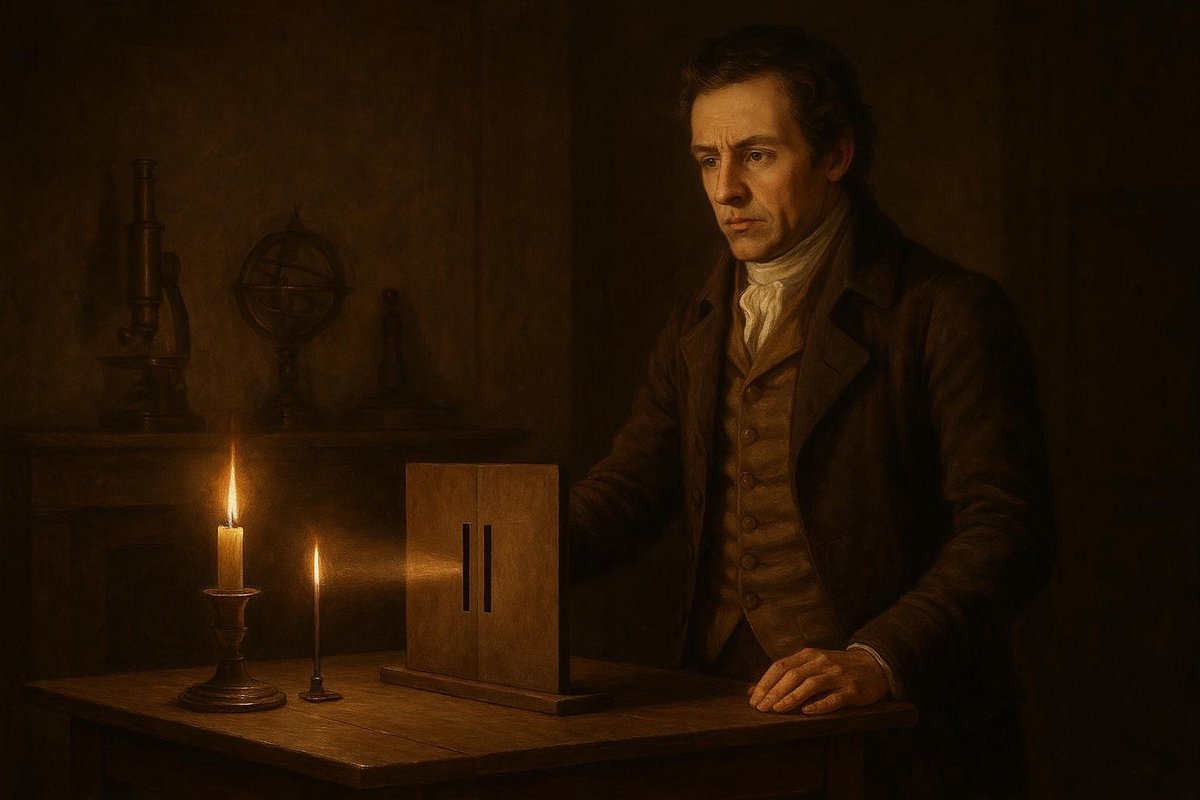
Thomas Young’s Quest for Light’s Secrets
In the early 19th century, the nature of light was a fiercely debated topic. Was it a wave, like sound, or a particle, like matter? Thomas Young, a polymath with an insatiable curiosity, sought to answer this question with an elegant experiment. At a time when classical physics held sway, Young dared to challenge established notions. His double-slit experiment would go on to reveal light’s dual nature, setting the stage for the quantum revolution.
Young hypothesized that if light was indeed a wave, it should exhibit interference patterns when passed through two closely spaced slits. The prevailing corpuscular theory of light, advocated by Newton himself, could not explain such patterns. Young’s quest was as much about understanding the nature of light as it was about challenging the scientific orthodoxy of his time.
- Young hypothesized that light behaves as a wave.
- He aimed to challenge the corpuscular theory.
- His hypothesis was based on observing interference patterns.
By seeking to unravel light’s mysteries, Young was not just engaged in a scientific endeavor but was also pushing against the boundaries of accepted scientific thought. His work laid the groundwork for future physicists to explore the quantum world.
Setting Up the Double-Slit Experiment
Imagine a dimly lit room in 1801, with Young carefully setting up his apparatus. The setup was deceptively simple: a beam of light directed at a barrier with two narrowly spaced slits, followed by a screen to capture the resulting patterns. As Young meticulously arranged the components, the air was thick with anticipation and the faint smell of candle wax.
His method was straightforward, yet groundbreaking. The experiment was designed to observe the behavior of light as it passed through the slits. Would it create overlapping waves of light and dark, or simply two bright lines? Young’s setup was an elegant demonstration that belied its profound implications.
- Young set up a light source aimed at two slits.
- A screen was placed to observe interference patterns.
- The setup was simple but had far-reaching consequences.
The meticulous organization of the experiment illustrated not only the simplicity of genius but also Young’s deep understanding of physics. The anticipation in the room was palpable as Young prepared to make history.
The Results That Shook Classical Physics
As Young conducted his experiment, the results were nothing short of astonishing. On the screen appeared a series of light and dark bands—an interference pattern, unmistakable evidence of wave behavior. This was a direct challenge to the corpuscular theory, which could not account for such a phenomenon.
The scientific community was abuzz. Some welcomed Young’s findings with open arms, while others met them with skepticism. Renowned physicist Augustin-Jean Fresnel built upon Young’s work, further solidifying the wave theory of light. However, proponents of the particle theory, including Pierre-Simon Laplace, were reluctant to abandon their views.
- Interference patterns provided evidence of light’s wave nature.
- Young’s findings challenged the prevailing particle theory.
- His work inspired further research and debate.
Young’s experiment was a pivotal moment in science. It not only altered the perception of light but also encouraged a spirit of inquiry and skepticism that would define the scientific method. His results were a clarion call for open-mindedness in scientific pursuits.
The Long-Lasting Implications
The double-slit experiment was more than a demonstration of light’s properties; it was a harbinger of the quantum age. Young’s work laid the foundation for future discoveries in quantum mechanics—where particles exhibit both wave-like and particle-like characteristics. No wonder this experiment is often cited as the cornerstone of quantum physics.
Young’s legacy lives on in modern physics. His experiment has been repeated with electrons, atoms, and even molecules, each time confirming the fundamental principles he uncovered. Today, the double-slit experiment is a staple in physics classrooms worldwide, prompting students to ponder the mysterious nature of reality.
- Young’s experiment is foundational to quantum mechanics.
- It has been replicated with various particles, affirming his findings.
- The experiment continues to inspire and educate.
By challenging the established views of his time, Young paved the way for a deeper understanding of the universe. His courage to question and innovate remains an inspiration for scientists and thinkers everywhere.
Fuel Someone Else’s Curiosity
Thomas Young’s story isn’t just about light; it’s about the spirit of inquiry and the courage to challenge the status quo. Share this story with someone who appreciates the mystery and wonder of science. Let’s inspire the next generation of curious minds. After all, isn’t it in questioning the world around us that we truly learn and grow?

Leave a Reply